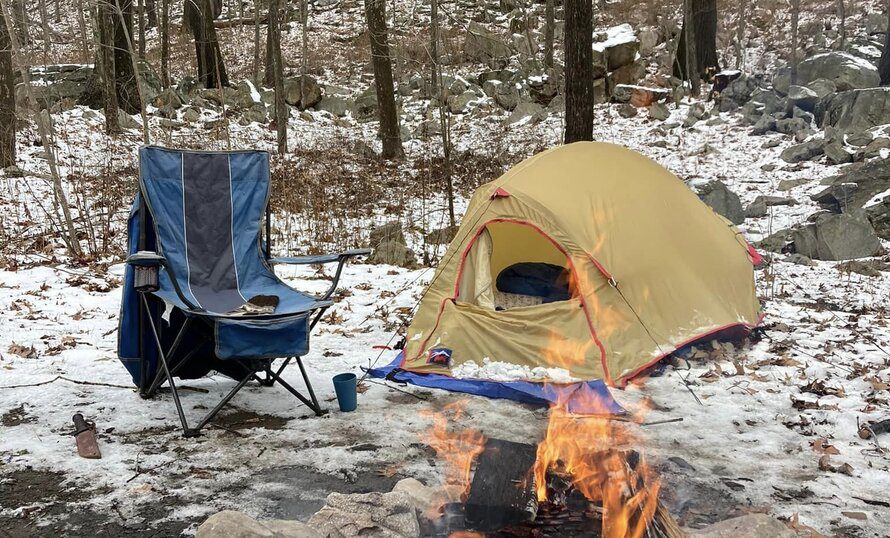Camping is beautiful because it’s simple, but costs like gear, campsite fees, and supplies can sometimes spoil the fun if you’re watching your wallet. Good news! With some clever decisions, you can discover amazing spots without spending a fortune.
Did you know you could save upwards of 60% on your next trip by opting for an RV adventure? That’s according to a recent study by Go RVing and the RV Industry Association!
In this article, I’m going to share my personal tips for having an incredible camping trip without breaking the bank.
We’ll talk about minimizing gear costs, choosing the right campground, and how to plan meals without sacrificing that delicious campfire flavor. Let’s get started!
Gear
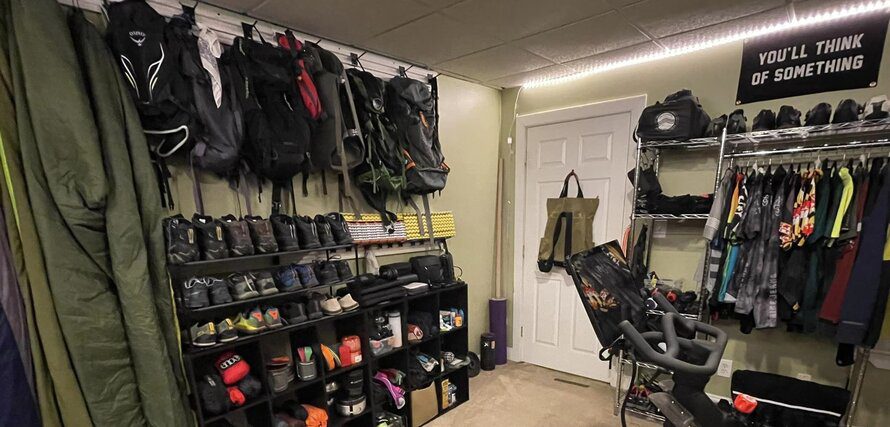
Here’s the thing about camping gear: the fancy, ultralight stuff that fills outdoor store shelves is undeniably cool, but it comes with a hefty price tag. Here’s how you can slash those costs without sacrificing your experience, just like I’ve done countless times:
Borrow or Rent Gear
Before automatically heading to an outdoor gear store, explore other avenues! Friends, family, or even local outdoor clubs might have perfectly good tents, sleeping bags, or backpacks they’d be willing to loan for your trip.
I’ve saved hundreds of dollars and tested out different equipment this way before deciding what to invest in myself.
If you only need specialized gear like climbing harnesses, snowshoes, or kayaks for occasional outings, renting becomes a smart option, offering access to top-quality equipment without a major financial commitment.
Product specialist Tam McTavish, and many other outdoor veterans, suggest trying this out:
“I’m a huge fan of encouraging people to rent. It’s a superb way to try before you buy. It’s hard not to develop preferences and renting gear can go a long way to inform you on what you like a don’t like.”
by Tam McTavish
Shop Secondhand
The secondhand market is an absolute goldmine for affordable camping gear. Garage sales, thrift stores, and online platforms like Facebook Marketplace or GearTrade are chock-full of lightly used equipment for a fraction of the original price.
Just last year, I scored a practically new 3-person backpacking tent for 60% off its original retail price – amazing! Always inspect items carefully for wear and tear, but patience and research often lead to incredible deals with secondhand shopping.
DIY Where Possible
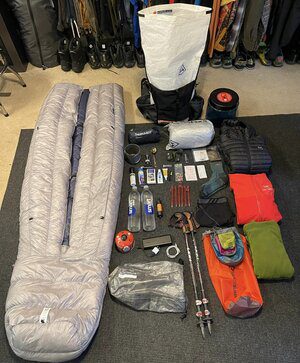
Getting crafty can mean both savings and creative satisfaction. For simple items like fire starters, reusable camp cloths, or gear organizers, materials from around your home might be all you need.
With a bit of resourcefulness, scraps of fabric, old containers, and paracord can be transformed into functional camp essentials.
Larger DIY projects like camp tables or lanterns can be rewarding, too, if you’re feeling particularly handy and enjoy turning raw materials into useful items. [1]
Use What You Have
Before adding anything to your shopping cart, take stock of what you already own! In warmer weather, I often use old blankets or throws instead of a dedicated sleeping bag.
Standard pots and pans from your kitchen can easily double as camp cookware, and that old trusty cooler in the garage might be perfect for keeping food and drinks chilled.
Getting creative with existing items avoids unnecessary expenses and forces you to pack more thoughtfully.
Focus on Multi-Functionality
On camping trips, limited space is a factor. That’s why it’s essential to choose gear that pulls double duty, making every ounce in your pack count.
Look for headlamps with a red-light mode, so you can see for campsite chores without attracting swarms of mosquitos, or water bottles with built-in filters if you’re concerned about purification on the trail.
Multifunctional items lighten your load and stretch your budget!
Here’s another tip: Wait for end-of-season sales – you can grab amazing deals on everything from tents to clothing with a little patience. Retailers often discount last year’s models to make room for new inventory, but these items are usually just as functional.
Planning & Location
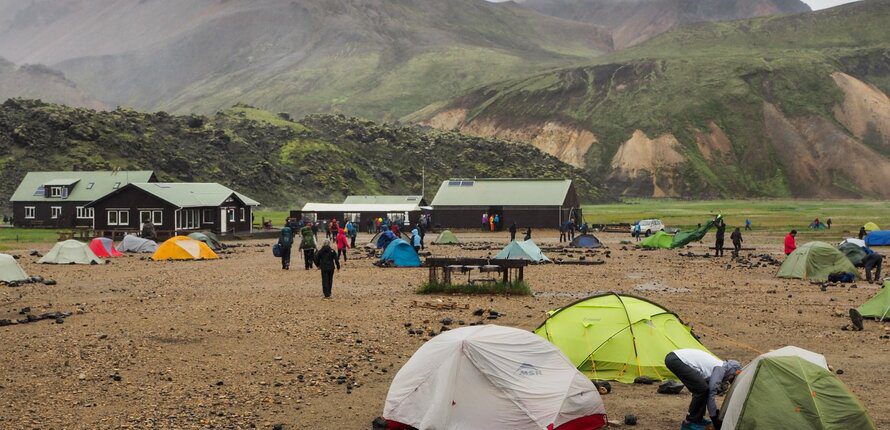
When it comes to camping on a budget, the decisions I make before leaving home count. Here’s how I prioritize location and planning to keep costs down:
Camp Closer to Home
Fuel is expensive! Instead of planning a cross-country road trip, I always check closer spots first. Exploring sites within a few hours’ drive might mean fewer Instagram-worthy mountaintop vistas, but I’ve discovered some of my favorite trails this way.
Plus, staying local means I can use that saved travel money for extra camping trips throughout the year.
Utilize Free Campsites
National forests, Bureau of Land Management (BLM) areas, and dispersed camping spots often offer the cheapest way to camp.
I do my research on websites like freecampsites.net or through ranger stations – I’ve snagged some incredible free spots this way, even within developed campgrounds that have first-come, first-served free sites.
Go Off-Peak
If you have the flexibility, try camping during shoulder seasons (spring and fall) – this is my absolute favorite. Sites are cheaper, crowds are smaller, and I’ve often lucked into amazing weather! It’s the best way to find a little quiet out in nature while keeping your wallet happy.
Research Group Discounts
Planning a trip with friends? I always look into potential group discounts. Many national parks, campgrounds, and even outdoor gear rental shops offer savings if you’re camping with a crew. A little coordination and research can help everyone save.
Bonus tip: I always download maps and offline trail guides before heading out. That way, I don’t have to worry about unexpected data charges if I need to find my way while wandering off the beaten path.
Food & Supplies
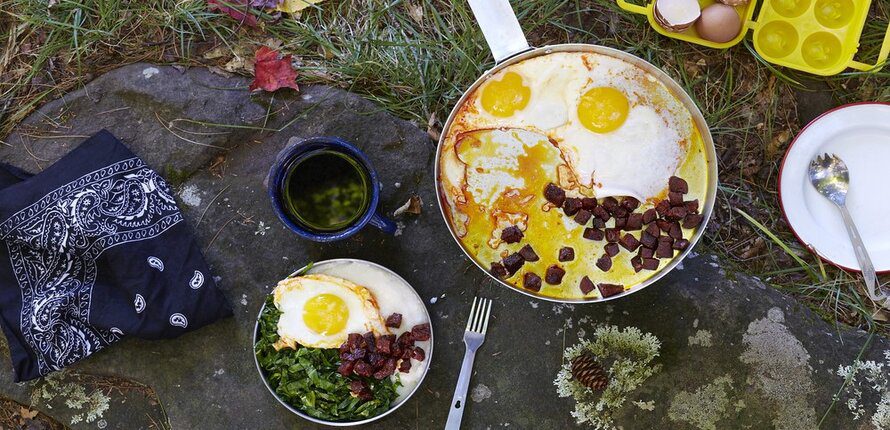
Cheap camping doesn’t have to mean surviving on bland trail mix and expensive dehydrated meals. Here’s how to turn camp cooking into a budget-friendly and tasty adventure:
Plan Meals
Meal planning is my ultimate weapon against impulse grocery buys and wasting food while out in the woods. Before any trip, I map out every breakfast, lunch, and dinner – even simple ones. Make sure to check out our article on hiking lunch ideas for some fresh meal inspiration!
My planning goes beyond just deciding if I’ll have oatmeal or eggs for breakfast; I make sure to specify portion sizes, the spices I’ll need, and if the ingredients can be used for multiple meals.
Related article: Easy Camping Meals: 10 Recipes Anyone Can Make.
Cook One-Pot Meals
Fewer dishes mean less to pack, faster cleanup, and – importantly for budget camping – less fuel used on my camp stove.
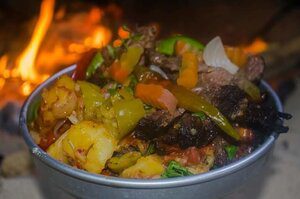
Think hearty stews, flavorful pasta dishes with protein and veggies, or foil-packet meals that cook evenly over the fire. I find one-pot dishes even taste better since the flavors have time to really meld together!
Buy in Bulk (Strategically)
While stocking up on non-perishable staples like rice, beans, dried lentils, and spices can be smart, buying in bulk only pays off if you’re sure to use those ingredients within their shelf life.
It’s important to have adequate storage space, too, so those bulk purchases don’t spoil. Plus, buying in bulk at warehouse stores is beneficial only if you plan to go enough times to justify a membership fee.
Utilize Local Resources
With proper knowledge and caution, foraging for edible plants like berries, wild greens, or mushrooms can add unexpected flavors to camp meals.
I carry a guidebook to be extra safe. Additionally, some campgrounds and trails may allow responsible fishing on designated waters – check the rules beforehand!
Sometimes, I’ve even bartered fresh-caught fish or extra snacks with fellow campers for fresh produce or other treats, leading to delicious meals for both parties.
Invest in Reusable Items
Ditch the disposable water bottles, paper plates, and plastic cutlery. Those one-and-done items cost far more in the long run.
I keep a dedicated set of reusable camp plates, bowls, sporks, and a water bottle – they make cleanup much easier and prevent adding to landfill waste. [2]
Saving on the Ground
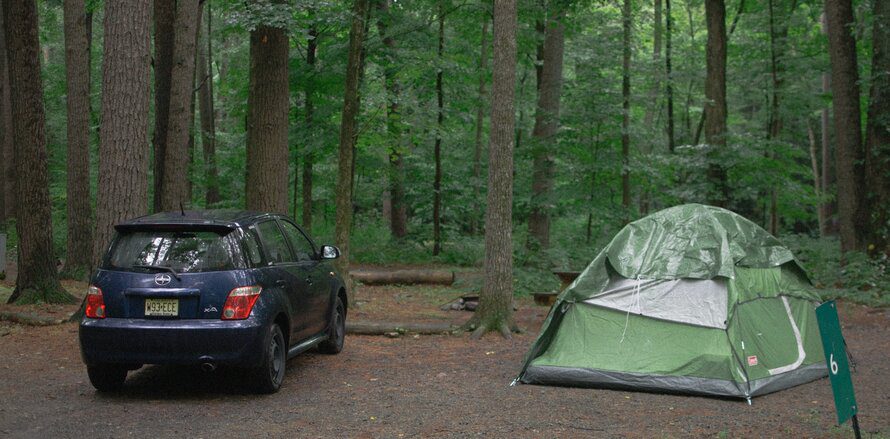
Forget expensive, gimmicky camping setups – a great campsite starts with the basics. Here’s how I prioritize function over price when it comes to on-the-ground expenses:
Skip the Fancy Tent
Unless you’re planning expeditions through extreme environments, a simple but well-made tent to protect you from the elements is perfectly fine. I started with a basic 3-person dome tent years ago, and it still serves me well for most trips.
Prioritize size based on how many people will realistically use it; don’t pay for extra space if you’re going solo or rarely camp with more than one friend.
Consider Car Camping
If you own a reliable SUV, hatchback, or even a truck with a camper shell, car camping can be a great way to get started on a budget.
It simplifies your shelter solution and offers extra storage for creature comforts like blankets, pillows, or even a budget-friendly air mattress if you have the space. This is especially smart if you’re new to camping and aren’t used to backpacking-style minimalism.
Invest in a Good Sleeping Pad
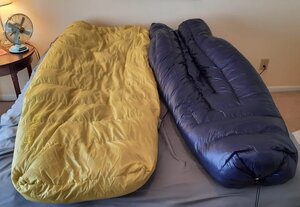
It might not be the flashiest purchase, but a decent sleeping pad makes a world of difference on outdoor adventures. Think of it as an investment in quality sleep – after all, exhaustion makes enjoying hikes and other activities difficult.
A good pad provides both cushioning and insulation from the cold ground, preventing you from shivering through the night and needing to buy extra blankets to compensate.
Embrace Layering
Instead of investing in multiple sets of specialized hiking clothes for every conceivable weather scenario, I strategically use layers from my existing wardrobe.
Light base layers, fleece jackets, a packable rain shell, and warm hats can be adapted to handle almost anything Mother Nature throws my way. This saves a ton of money on expensive outdoor brands.
DIY Camp Furniture
When camping for cheap, crafting simple seating or a mini table from fallen branches or sturdy rocks offers a break from sitting on the ground and eliminates the need to buy camp chairs.
Look for flat-topped logs for stools or a larger, smooth rock to turn into a makeshift prep area for camp meals.
Bonus tip: Don’t waste money on inflatable camp pillows! Old pillows from home provide comfortable cushioning, or just repurpose extra clothes as your headrest. It’s simple, it’s cozy, and it’s completely free.
Extra Savings
Sometimes the cheapest and most satisfying moments of camping aren’t about buying fancy gear or chasing paid attractions. Here’s how I keep things simple and enjoyable while stretching my budget even further:
Pack Entertainment
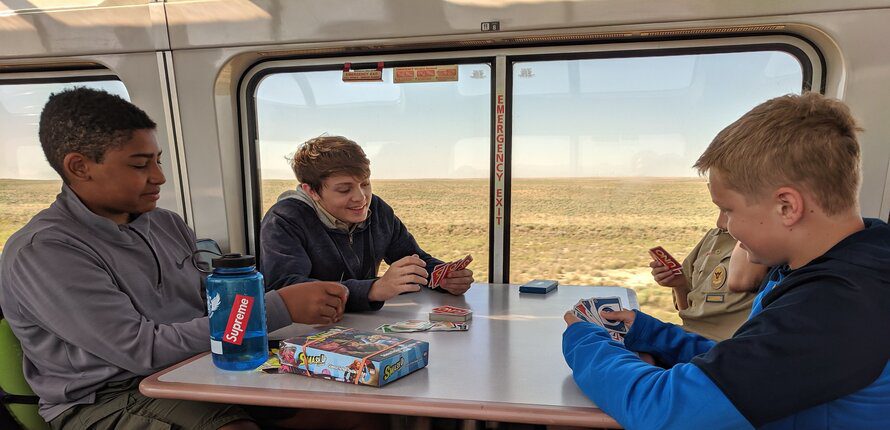
It’s easy to let boredom set in while camping, but there’s no need to spend money fighting it!
I always bring a deck of cards for solo games or multi-player fun, a couple of favorite books to re-read or swap with friends, or simple word games like “20 Questions” that require no equipment.
If someone in my group knows how, even packing a travel-sized guitar or harmonica adds a special touch.
Plan Water Activities
Natural bodies of water can be the ultimate cheap amusement when it comes to camping. Swimming in a designated lake area, wading in a cool stream after a long hike or walk, or just splashing around to beat the heat is simple and surprisingly satisfying.
If no natural water sources are available, I fill a bucket or portable water jug for impromptu “showers” to clean up or cool down on hot days. Remember to use biodegradable soaps if washing up in nature to protect the environment!
Explore other exciting camping activities in this article!
Embrace the Campfire
The classic campfire is more than just a source of warmth and light.
It’s the perfect spot for gathering with friends or family to laugh, tell spooky stories, enjoy a simple sing-along (someone always brings a guitar!), or just quietly take in the mesmerizing crackle and flicker of the flames.
There’s a reason humans have been gathering around fires for millennia.
Limit Souvenirs
While it’s tempting to pick up items to remember your trip, the best keepsakes from a camping adventure are the memories you make and any photos you capture.
I skip the overpriced, mass-produced trinkets and focus on taking in the experience. The moments shared with loved ones or the feeling of a hard-earned mountain view will mean far more in the long run.
Share Resources
Camping with friends or family opens up so many possibilities for saving money.
Plan to split the cost of a larger campsite, cook shared meals with everyone chipping in ingredients to avoid food waste, or coordinate transportation instead of everyone taking separate cars to reduce fuel costs.
Sharing a trip brings extra camaraderie and cuts down on individual expenses.
References:
- https://www.moneycrashers.com/should-do-it-yourself-diy/
- https://zerowastelivinglab.enviu.org/blogs/why-investing-in-reuse-is-both-environmentally-and-economically-sensible/

